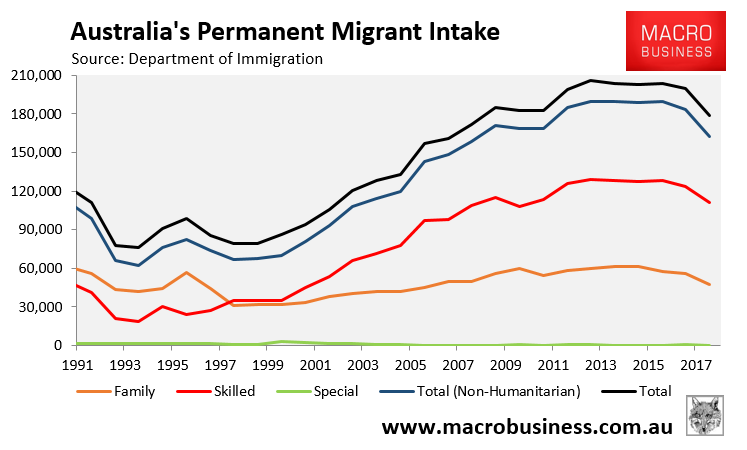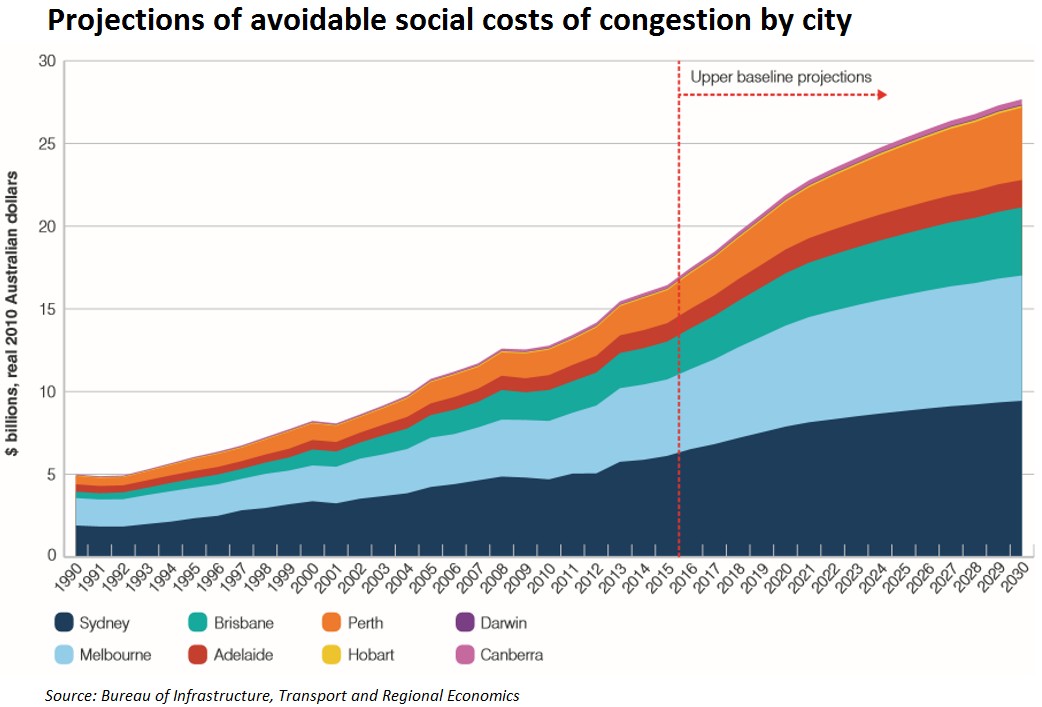The ABC’s Stephen Long and Michael Janda have produced an interesting report looking at Australia’s weak wages growth, which includes the below pearls [my emphasis]:
“The biggest cost to most companies is their wage bill,” said Warren Hogan, a professor at the University of Technology, Sydney Business School and formerly chief economist at ANZ.
“So, when they look at how to increase profitability, keep themselves in business, wages are absolutely front and centre”…
Corporate efforts to cut labour costs have spawned a new lexicon: casualisation, outsourcing, offshoring, franchising, independent contracting, labour hire, gig work.
The aim of these strategies is to increase flexibility and reduce risk… Employees who once would have enjoyed permanent tenure are now on short-term contracts. Core parts of a business that once would have been done by directly employed staff are now competitively tendered…
“Wage theft” scandals in Australia at franchise businesses such as 7-Eleven are another example…
One-in-25 employees work for a labour hire company.
Warren Hogan says efforts to cut labour costs through casualisation, contract-based work and outsourcing are a significant contributor to wages stagnation…
“It’s now pervasive across the whole economy, this casualisation and contract-based work”…
As the Nobel laureate economist Paul Krugman said: “Productivity isn’t everything, but, in the long run, it is almost everything. A country’s ability to improve its standard of living over time depends almost entirely on its ability to raise its output per worker.”
But if low wages growth becomes entrenched, it will also pose a threat to productivity and risks locking Australia into a low-wage, low-productivity spiral.
Low wages growth is putting a cap on future productivity increases, says Alison Pennington, because cheap wages crowd out productivity raising investments.
“If you were an employer who had access to an abundant supply of cheap, skilled labour, why would you choose to invest in new technologies, or new software, or invest in upskilling the workforce when all the firms in your industry are all competing on labour costs?” she said.
And there is a lot of evidence that is what the Australian economy looks like right now.
For years Australians have been fed the false claim that Australia needs to run a strong skilled migration program (both permanent and temporary) in order alleviate imaginary skills shortages. We have also been told that skilled migrants are younger, more educated, and more productive than locals, and that without a strong immigration intake, the economy would stagnate.
However, the evidence is highly contestable, with migrants generally being employed below the level of their qualifications, as well as having lower labour force attachment than the Australian born population (more information here). Migrants have also tended to go into areas that are not experiencing skills shortages.
No surprisingly, then, Australia’s productivity has cratered at the very same time as skilled migration was ramped-up:

In reality, the business lobby’s incessant warnings of ‘skills shortages’ and the need for an endless supply of migrant workers are really code for “we want to pay workers less”.
Stopping the flood of migrant workers into to economy would be positive for both productivity and wages. Why? First, because the least productive businesses would lose people, shrink and go bust, transferring workers, land and capital to more productive businesses, thereby raising average productivity across the economy. Second, all businesses, observing higher wages, would invest more in labour saving technologies, training and restructuring to raise productivity.
This is how the labour “market” is supposed to work. However, allowing the mass importation of foreign workers circumvents the ordinary functioning of the labour market by enabling employers to pluck cheap foreign workers in lieu of raising wages. This is deleterious for both Australian workers and the broader economy.
Let’s also remember the other ‘costs’ of mass immigration on productivity. Growing the population without commensurately increasing the stock of household, business and public capital to support the bigger population necessarily ‘dilutes’ the capital base, leaving less capital per person and lowering productivity. We have witnessed this first hand with the costs of congestion soaring across Australia’s big cities.

Moreover, the cost of retro-fitting Australia’s major cities with infrastructure to cope with larger populations is necessarily very expensive – think tunnelling and land acquisitions – with costs borne largely by the incumbent population.
Given Australia’s low savings rate, the large levels of housing and infrastructure investment required to keep pace with population growth also puts upward pressure on real interest rates. That, in turn, has kept the Australian dollar elevated for years making it harder to export from Australia and resulting in manufacturing closures.
Finally, high immigration has unambiguously helped to lift housing costs. This has made it more difficult for younger households to invest in businesses, limiting entrepreneurship. High housing costs also creates barriers to labour mobility and social mobility, both of which matter for achieving Australia’s productive potential.
Currently, there is no economic plan other than to flood Australia’s major cities with tens-of-thousands of extra people each year to stoke overall economic growth (but not growth per person), to support big business (e.g. the property industry), and to prevent Australia from going into recession (despite growth and income per person stagnating).
Meanwhile, productivity and individual living standards are being eroded through labour market inefficiencies, rising congestion costs, declining housing affordability, paying more for infrastructure (e.g. toll roads and water desalination), environmental degradation, and overall reduced amenity.
Mass immigration is hindering, not helping, Australia’s productivity.

